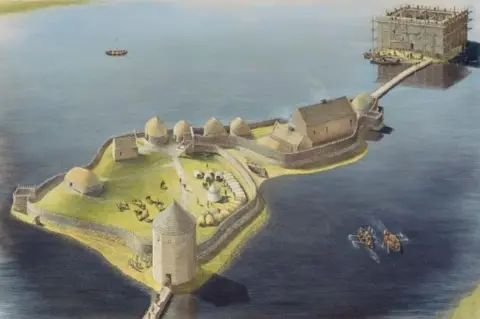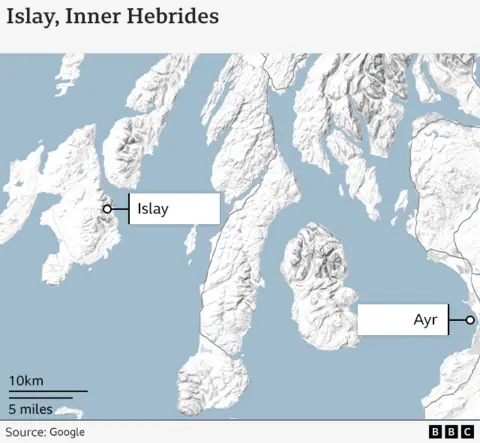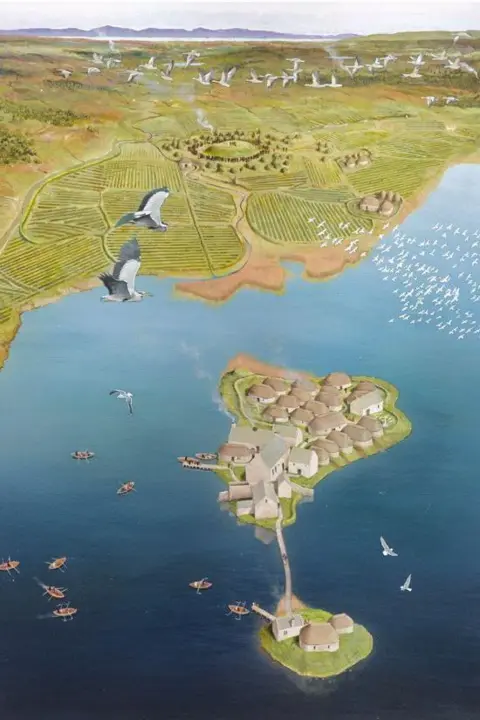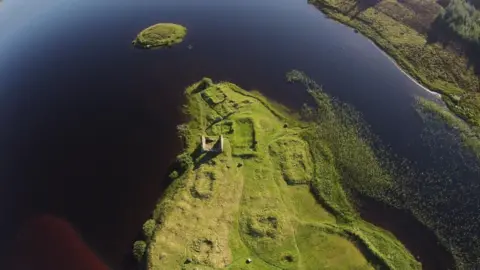Steven McKenzieBBC Scotland News
 David Simon
David SimonA “forgotten” castle discovered on a Hebridean isle could have been home to kings who once ruled large parts of western Scotland, say archaeologists.
They believe the fortress, which was built across two small islands in a loch at Finlaggan on Islay, belonged to royalty more than 700 years ago.
Their descendants included MacDonald clan chiefs who became known as the Lords of the Isles.
These lords turned Finlaggan into a power base from where they controlled the Hebrides, Argyll and parts of the north west Highlands.
 Dr David Caldwell
Dr David CaldwellArchaeologists have spent almost 30 years studying Finlaggan to gain a better understanding of its place in the kingdom of the Lords of the Isles, and the site’s earlier history.
Remains of a castle were uncovered and dated to the 12th and 13th centuries, before the lords rose to power.
The castle had a rectangular stone tower similar to a keep, a type of heavily fortified stronghold found in castles in Carlisle, Bamburgh and Lancaster in England.
The tower had living quarters, courtyards, kitchens, a great hall where feasting took place and a chapel with a burial ground.

Archaeologists said Anglo-French kings in Britain and Ireland were known for constructing rectangular towers, and they suggested Finlaggan’s was built as a sign of power and wealth.
The castle may have been demolished because it was structurally unsound or damaged in enemy attacks.
A palace was later built on the same site for the Lord of the Isles.
 David Simon
David SimonThe Lords of the Isles behaved like kings and regarded themselves as equals of Scottish and English royalty.
They carried out raids in mainland Scotland and places they attacked included Urquhart Castle on the shores of Loch Ness.
In the new book, archaeologists said Finlaggan was the lords’ centre of power.
 Open Virtual Worlds at University of St Andrews
Open Virtual Worlds at University of St AndrewsThe book has been published by the Society of Antiquaries of Scotland.
Author Dr David Caldwell led a team of specialists and volunteers in uncovering the new insights about Finlaggan.
He said: “The processing of all the data that was gathered has been a major part of my life since the 1990s and I hope I have not only provided an account of interest but also a basis for others to carry out more research in the future.”
Dr Helen Spencer, head of research at the Society of Antiquaries of Scotland, said the charity’s mission was to share knowledge of the past as widely as possible.

